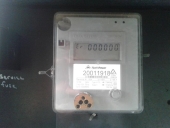David Baillie wrote:Very nice setup Debi. That Trace is a rock solid inverter. In California I wouldn't even bother changing the trace pwm charge controller. In my northern clime the mppt chargers made solar much more viable. Do you have a softstart feature on your pump? Grundfos makes a great ac softstart pump that will do away with that great startup dimming while keeping your costs down by staying ac. Here is Grundfos' video talking about the difference and an install...
https://youtu.be/g8kbg8j9AC0
https://youtu.be/xBu3ivDXSbo
Cheers, David
Thanks! I think it is good to note that a 2kW or 2.5kW system is not expensive and it is a lot of power realy.
I have a nice Grundfos pump, the same as in your link but mine is 120V ( not 240v so I can run it off batteries when I want to or need to) But, I can tell you that their dry pumping protection does not work, major disappointment for my well where by the beginning of fall we can pump out faster tha the recharge rate, at least in bad back to back drought years. I threw a 24 hour dip switch timer to that well pump so that it gets power, right now I can change it, 15 minutes out of every hour during off peak night hours.
So besides letting it just pump slow in daylight, I would just do straight sun to pump, pump when the sun is out nothing fancy, going DC on the well pump (I also have a Grundfos pressure pump) at some future date if/when the pump dies would just be a very cost effective way to have more electric, their realy isn't enough viable roof space on the main house to bother and the cob rental studio is also almost all electric. But it uses so little, no reason to replace working equipment ( he is submetered and pays for his power and it is not battery backed up)
The charge controller I have on the small string is a mppt one. But, yeah, no reason to change out that old c40 made in CA one for a new item that may not last












